-
 Sree Padmanabhaswamy Temple
Sree Padmanabhaswamy Temple
Shree Padmanabhaswamy Temple is located in Thiruvananthapuram, Kerala, India . The temple is built in Dravidian style of architecture associated with the temples located in the neighboring state of Tamil Nadu, featuring high walls and a 16th-century Gopuram. While the Moolasthanam of the temple is the Ananthapuram Temple in Kasargod, architecturally to some extent, the temple is a replica of the Adikesava Perumal temple located in Kanyakumari District. It is the richest Hindu temple in the world. In fact, in terms of precious metals and precious stones, it is by far the wealthiest institution and place of worship of any kind in the recorded history of the world.
-
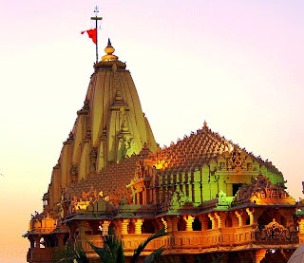 Shree Somnath Mahadev Mandir, Veraval, Gir Somnath, Gujarat
Shree Somnath Mahadev Mandir, Veraval, Gir Somnath, Gujarat
Somnath temple is one of the most important temples in the country and is considered Aadi or the first of the twelve 'Jyothirlingas'. The Sivalinga here is Swayambhu or Natural formation. Somnath temple was referred to in many ancient texts and is one of the richest temples of those times.
-
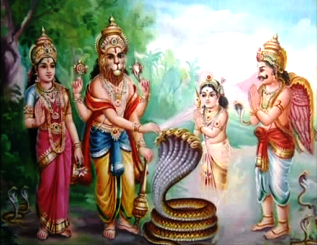 Ghati Sri Subramanya Temple, Doddaballapur, Karnataka
Ghati Sri Subramanya Temple, Doddaballapur, Karnataka
Ghati Sri Subramanya Temple is a standout amongst the most prominent sanctuaries among the hundreds that are scattered in and around Bangalore. Individuals run in thousands to this sanctuary and the directing divinity, Sri Subramanya, is especially famous with the Tamilian populace of Karnataka.
-
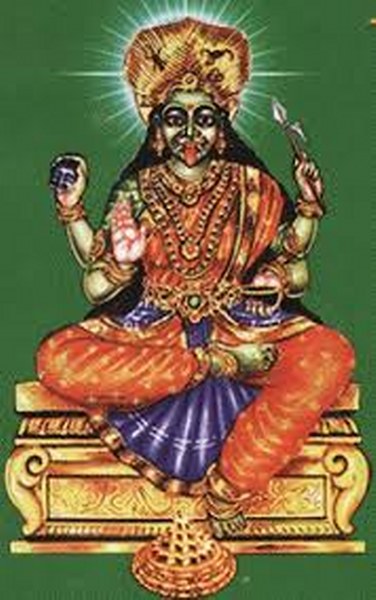 Sri Jogulamba Devi Temple, Alampur
Sri Jogulamba Devi Temple, Alampur
The word "Jogulamba" is derived from "Joginula Amma" (Mother of Joginis). Jogini (also called as Yogini) means a female person, who has given up all the earthly attachments. Jogini also has another meaning which implies a dancer (female) whose life is dedicated to God. Hence, the goddess is also known as Yogulamba or Yogamba.According to Hindu mythology, "Oordhva Danta Pankthi" (upper jaw with tooth) of Devi fell here and the place formed as a Sakthi Peetham.
-
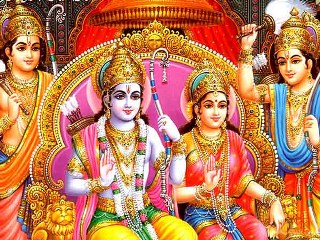 Story Behind Sri Rama Navami
Story Behind Sri Rama Navami
Rama is the in-dweller in every body. He is the Source of Bliss (Atma-Rama) in every individual. His blessing, surging from that inner spring, confers peace and bliss. He is the very embodiment of Dharma, of all the codes of morality that hold mankind together in love and unity
-
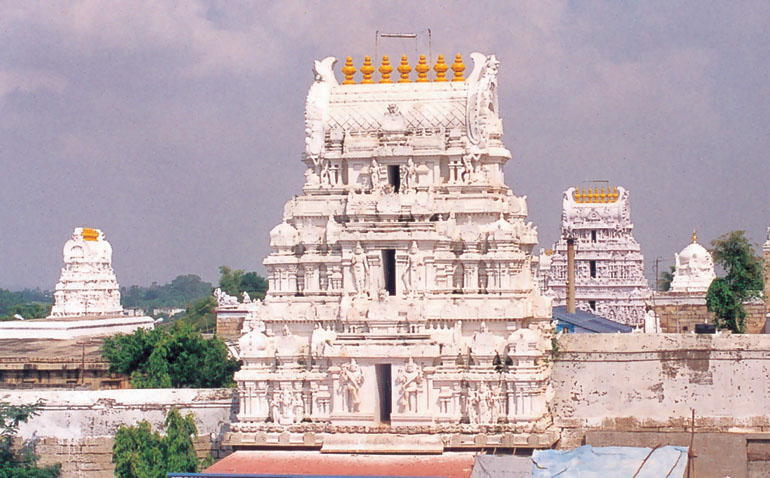 Sri Kalahasteeswara Temple, Srikalahasti, Chittoor, Andhra Pradesh
Sri Kalahasteeswara Temple, Srikalahasti, Chittoor, Andhra Pradesh
Srikalahasti Temple is situated in Chittoor district of the state of Andhra Pradesh. In South India, it occupies a place of eminence among the holy Siva kshetras. The temple is called as Dakshina Kailasam located on the banks of the river Swarnamukhi. The architecture of Srikalahasti Temple-Chitoor is extraordinary, it has three massive Gopurams which are breathtaking. Another striking feature of the temple is its huge Mantapam with hundred pillars.
-
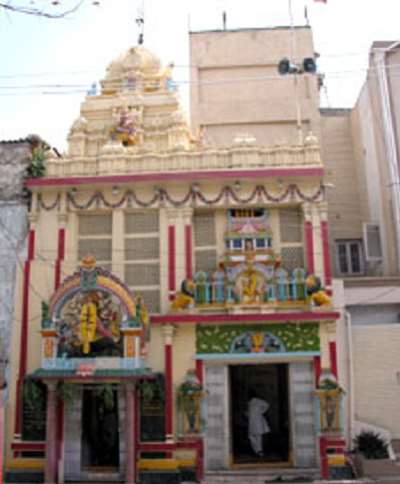 Shri Akkanna Madanna Mahankali Mandiram, Hyderabad, Telangana
Shri Akkanna Madanna Mahankali Mandiram, Hyderabad, Telangana
Akkanna Madanna Temple is located in Shalibanda, Hyderabad. The presiding deity in this temple is Lord Mahankali. It is popular during the festival of Bonalu that is celebrated in the twin cities of Hyderabad and Secunderabad. The temple is known for the Ghatam procession during Bonalu.
-
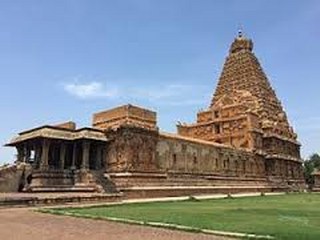 Peruvudaiyaar or RajaRajeshwara Temple, Thanjavur
Peruvudaiyaar or RajaRajeshwara Temple, Thanjavur
The Brihadeeswarar Temple was built to display the emperor's vision of his power and his relationship to the universal order. On the 275th day of his 25th regal year (1010 A.D) Raja Raja Chola handed over a gold-plated kalasam (copper pot or finial) for the final consecration to crown the vimana. Located in the nerve centre of the Chola empire, the temple attracted musicians, scholars, craftsman and merchants. Most notably, it served as a platform for the dancers who excelled in the traditional dance form of Bharatha Natyam. The Cholas were ousted by the Pandyas.
-
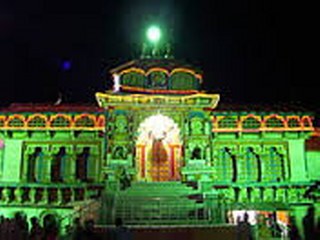 Shri Badari Nath Mandir, Badrinath, Uttarakhand
Shri Badari Nath Mandir, Badrinath, Uttarakhand
Badrinath, a Hindu holy town is situated in the Chamoli district in Uttarakhand. In 2006, around 6,00,000 pilgrims visited this place compared to only 90,676 pilgrims in 1961. This place has found its mention in the scriptures and legends for many years now. Its importance as a holy place has been imbibed in us since childhood. The name Badrinath was derived from Badri meaning 'berries' and Nath meaning 'Lord'
-
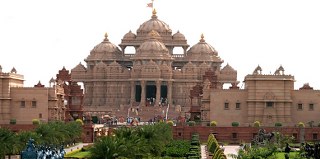 Akshardham Temple, New Delhi
Akshardham Temple, New Delhi
One of the most popular and amazing tourist attractions in the Indian nation is Akshardham temple. Each element of Akshardham echoes with spirituality ?the Mandir, the Exhibitions and even the Gardens. The Akshardham mandir has over two hundred murtis, representing many of the spiritual stalwarts over many millennia. The spiritual premise of Akshardham is that each soul is potentially divine. Whether we are serving the family, the country our neighbors or all living beings the world over, each service can help one move towards divinity. Each prayer is a call towards improving oneself and moving closer to God.
-
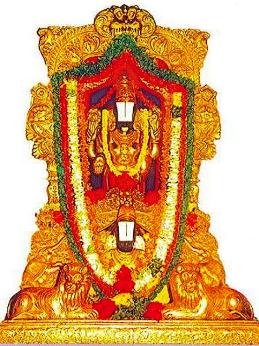 Sri Venkateswara Swamy Vari Devasthanam, Dwaraka Tirumala
Sri Venkateswara Swamy Vari Devasthanam, Dwaraka Tirumala
Dwaraka Tirumala temple is dedicated to Lord Venkateswara. The temple is very popular in these parts of the country and is often referred to as 'Chinna Tirupathi' in local parlance, which translates to mini Tirupathi. The name Dwaraka is from the legend of the great saint 'Dwaraka', who is said to have found the Swayambhu idol of the Lord here after a rigorous penance.
-
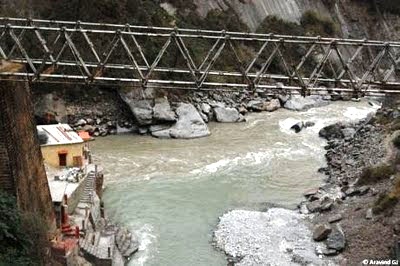 Vishnu Prayag
Vishnu Prayag
Formed by the confluences of the impetuous Vishnu Ganga (known, after this point, as the Alaknanda) and the Dhauliganga rivers, Vishnu Prayag, 1,372 mts. has an ancient temple here by a pool called Vishukund. It is said that the sage Narada worshipped Vishnu at this sanctified spot, and the Lord, pleased with his austerities, had given him his blessings. Visitors are find the Kagbhusandi lake bewitching with its emerald green depths giving it a still surface, while on the banks, blossoms evoke the colours of nature in all her glory. The lake can be approached from either Bhundar village near Ghangaria or from Vishnu Prayag.
-
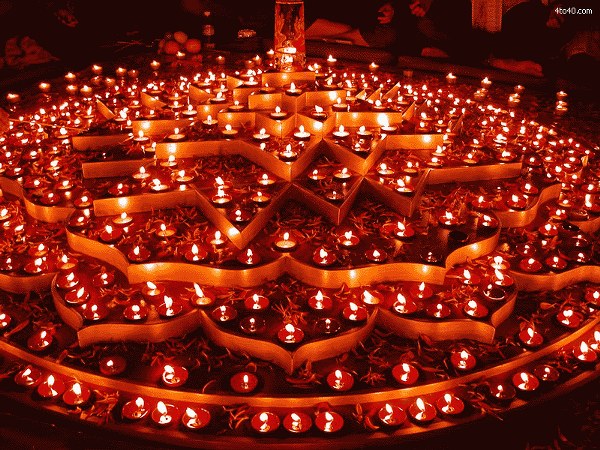 History of Diwali
History of Diwali
The most famous legend behind the celebrations of Diwali is about the prince of Ayodhya Nagri - Lord Shri Ram. The king of Lanka, Ravana, kidnapped Ram's wife - Sita from the jungle, where they were staying as per the instructions of King Dashratha, father of Lord Ram.The traces and clues to the history of Diwali are embedded in different interesting and fascinating legends of Hindu mythology that are corroborated by various ancient religious scriptures, such as the Puranas
-
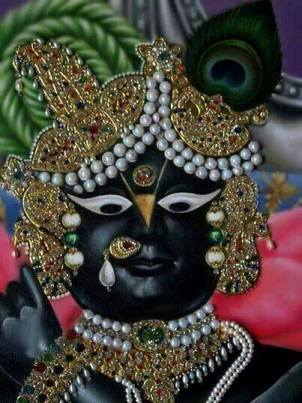 Shrinathji Mandir, Nathdwara
Shrinathji Mandir, Nathdwara
Nathdwara literally means 'the Gate of the Lord'. The city is located on the banks of the Banas River and is home to one of the most popular pilgrimage destinations in the country ? the temple of Shrinathji, dedicated to Lord Krishna. The temple has a rich cultural and historical legacy as it is associated with many legends of the Lord. The temple attracts pilgrims from all across the globe and is one of the wealthiest temples in the country.
-
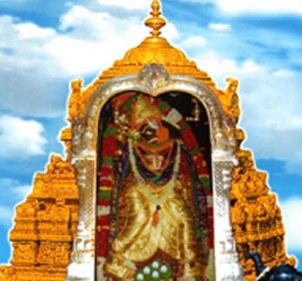 Sri Nettikanti Anjaneya Swamy Vari Devasthanam, Kasapuram
Sri Nettikanti Anjaneya Swamy Vari Devasthanam, Kasapuram
In the rule of Sri Krishna Devaraya to the Vijayanagaram Kingdom his Guru Sri Vyasarayaluvaru went on tour to attain religious austerities. While he was on tour, he stayed at Village called 'Silpagiri' now called as 'Chippagiri' Lord Sri Anjaneya Swamy appeared before Sri Vyasaraya in his dream and advised him to consecrate his idol at place,
-
 Mythology of Hampi
Mythology of Hampi
Origin of Hampi: The name Hampi is evolved from Pampa, the ancient name of the river Tungabhadra. Also Pampa is the daughter of Bhramha, the Creator God. She was a devoted worshiper of Shiva, the God of Destruction. Impressed by her dedication Shiva offered her a boon and she opted to marry him! The place thus came to be known as Pampakshetra (land of Pampa) and Shiva as Pampapathi (consort of Pampa).
-
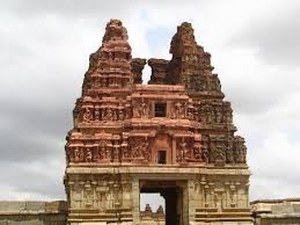 Virupaksha Temple, Hampi
Virupaksha Temple, Hampi
The Virupaksha Temple in Hampi, Karnataka is noted for its architecture and has been listed among the UNESCO World Heritage Sites.Virupaksha Temple has been, for centuries, considered the most sacred of the temples at Hampi. This temple is situated on the southern bank of the Tungabhadra, immediately to the north of the Hemakuta hill. The temple complex lies within a long rectangular enclosure.
-
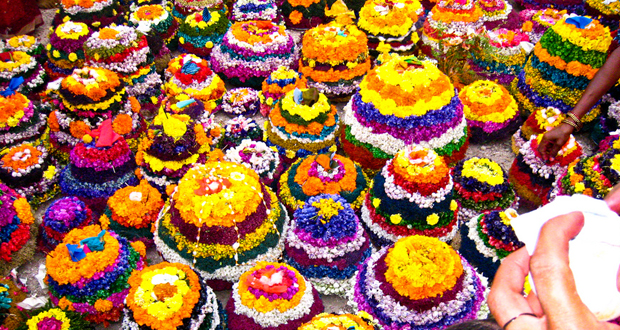 Saddula Bathukamma Festival Story and its Significance
Saddula Bathukamma Festival Story and its Significance
Batukamma comes during the latter half of monsoon, much before the onset of winter. The monsoon rains would have brought plenty of water into the cheruvulu (fresh water ponds that are a major source of irrigation through out Telangana) and the wild flowers bloom in various vibrant colors all across the uncultivated and barren plains of the region.
-
 Spitirual Importance Banana
Spitirual Importance Banana
n some pooja, the leaves are used to serve "prashad". Just as leaves of bel tree are customarily offered to Lord Siva, it is believed that offering of the leaves of banana pleases Lord Ganesa. Banana as a fruit is offered to Lord Vishnu and Laksmi.
-
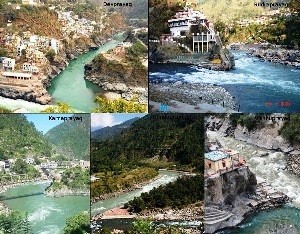 Panch Prayag or Five Confluences
Panch Prayag or Five Confluences
Panch Prayag means "Five Confluences". It refers to the five confluences which takes place at Vishnu Prayag, NandaPrayag, KarnPrayag, Rudraprayag and Devprayag respectively to form river Ganga. Ganga, the most sacred of Indian rivers, is worshipped as the life-giving goddess, which brings salvation to this land.
-
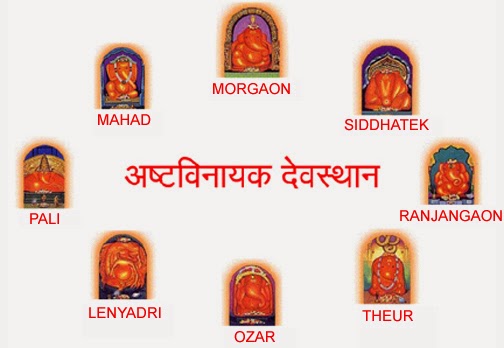 Ashtavinayak Temples
Ashtavinayak Temples
Ashtavinayaka means eight Ganeshas refers to a pilgrimage to the 8 Ganesha temples in Maharashtra state. The Ashtavinayaka yatra covers the eight ancient holy temples of Lord Ganesha, situated in Ahmednagar,Raigad and around Pune district.
-
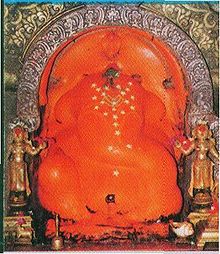 Shri Moreshwar Mandir, Morgaon, Pune, Maharashtra
Shri Moreshwar Mandir, Morgaon, Pune, Maharashtra
Shri Moreshwar Mandir is a Hindu temple (mandir) dedicated to Ganesha, the elephant-headed god of wisdom. It is located in Morgaon in Pune District, about 80 kilometres (50 mi) away from Pune city in the Indian state of Maharashtra. The temple is the starting and ending point of a pilgrimage of eight revered Ganesha temples called Ashtavinayaka.
-
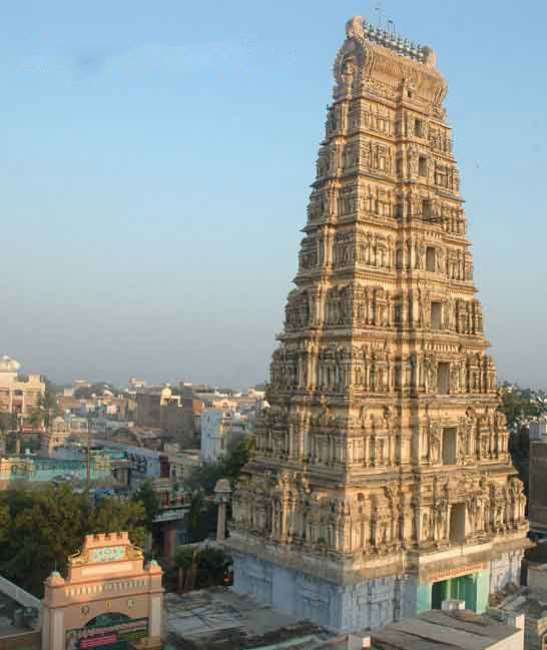 Chennakesava Swamy Temple, Markapuram
Chennakesava Swamy Temple, Markapuram
Chennakesava Swamy Temple located in Markapuram of Prakasam district is a famous temple of Lord Sri Maha Vishnu. The presiding deity in this temple is Sri Maha Vishnu in the divine form of Chennakesava Swamy and is seen with His consort Goddess Sri Mahalakshmi. The Lord is called Kesava because He killed a demon called Kesi.
-
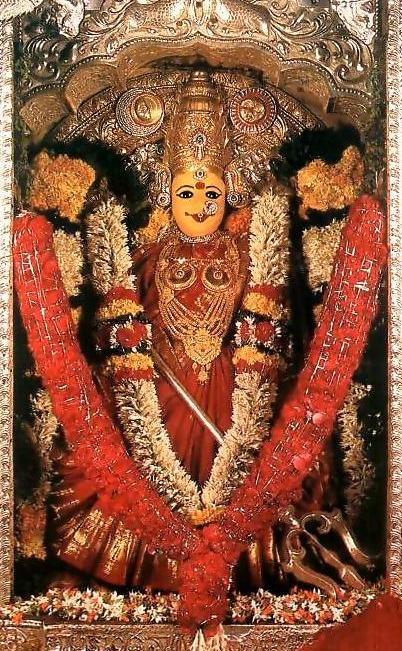 Sri Durga Malleswara Swamy Varla Devastanams, Vijayawada
Sri Durga Malleswara Swamy Varla Devastanams, Vijayawada
Goddess Kanaka Durga self-manifested(Swayambhu)on a hillock known as Indrakeeladri on the left bank of the river Krishna at Vijayawada in Andhra Pradesh in South India. The shrine also called Sri Durga Malleswara Swami Temple dates back to the 8th century. The temple is said to have been constructed during the rule of Mogalaya ruler Thanisha. According to the Sthalapuranam,Thanisha with the assistance of his ministers Akkanna and Madanna managed the temple from Kondapalli.
-
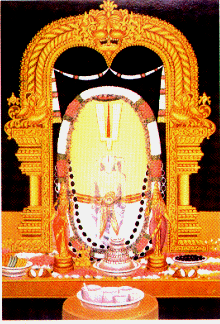 Simhachalam Temple
Simhachalam Temple
Simhadri or Simhachalam is a Hindu temple located in the Visakhapatnam City suburb of Simhachalam in Andhra Pradesh, South India. It is dedicated to Narasimha (the man-lion), an incarnation (avatar) of Vishnu. The architectural style of the central shrine is Kalinga architecture.
-
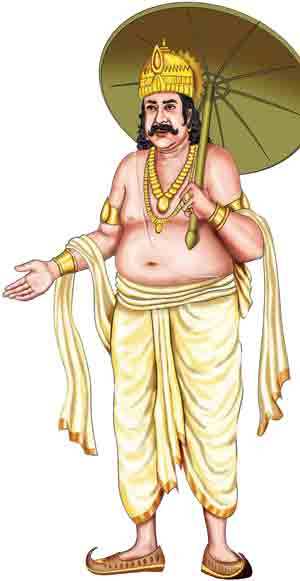 Onam
Onam
Onam, the annual harvest festival is an occassion of great joy. Celebrated mainly in the Indian state of Kerala, the Onam celebrations range from four days to ten days, and centre around worshipping, music, dances, sports, boat races and of course...delicious foods. The festival originates from various legends and traditional beliefs. Here we bring you a brief history of the Onam festival. Read it and know how the festival got its roots. To share with anyone this informative article on the history of Onam, just click here. Wish you a happy festive time!
-
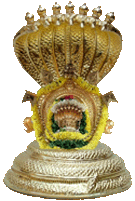 Kukke Shree Subrahmanya Temple
Kukke Shree Subrahmanya Temple
Kukke Subrahmanya is on the bank of river Dhara. According to Hindu Mythology Lord Kumaraswamy came to this place after killing the demon rulers Taraka, Shoorapadmasura and others in a war; and the Lord washed his Shakthi Ayudha (a battle-ax of the type of a bayonet) in this river. From this onwards the river is famous as Kumaradhara.
-
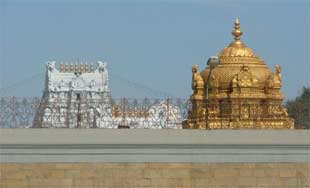 Tirumala Tirupathi Devasthanams
Tirumala Tirupathi Devasthanams
Worshipping Lord Venkateshwara, also known as Lord Balaji, has been described in many ancient texts and by many scholars as the only way to attain salvation in Kalyug. The Lord here is extremely popular among the pilgrims and it is deep rooted belief that one's desires will be fulfilled after worshipping the Lord here. Lord Venkateswara is the richest God in the world and the temple is visited by thousands of pilgrims and the attendance exceeds hundreds of thousands during the Brahmotsavams and other festive occasions. The Lord here is addressed by many names and the temple is considered extremely holy.